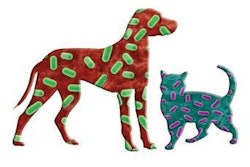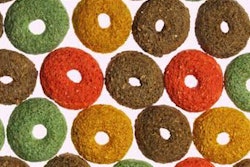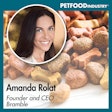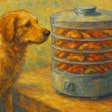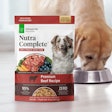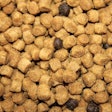Two studies released in March 2014 show that pet obesity is becoming an all too common problem in developed petfood markets. First, UK's Pet Food Manufacturers’ Association (PFMA) issued “Pet Obesity: Five Years On,” an update to an initial report from 2009. The picture now does not look any better than it did then: Today 77% of UK veterinarians believe pet obesity is on the rise, yet 63% of pet owners say there are more important issues with their pets than obesity. Further, while vets believe up to 45% of all pets they see are overweight (45% of dogs, 40% of cats, 28% of small animals and 15% of caged birds), again, 63% of pet owners say their pets are the correct weight.
These data mirror ones in the US from a study by the Association for Pet Obesity Prevention (APOP) conducted in fall 2013. While veterinarians included in the survey indicated 52.6% of US dogs are overweight or obese, and 57.6% of US cats fall into that category, a whopping 93% of dog owners and 88% of cat owners surveyed believed their pets were in the normal weight range.
APOP refers to this difference between veterinarians’ and pet owners’ perceptions of pet weight as the “fat gap.” Because its annual studies have indicated this gap for several years, in December 2013, APOP conducted an online survey of 590 US pet owners to better understand the dissonance. The results at least partially explained it: 42% of owners admitted they don’t know what a healthy weight for their pets looks like. That doesn’t account for the remaining, large percentage of owners who believe their obese pets are perfectly normal.
“The fat gap is rampant, and we believe it’s the primary factor in the pet obesity epidemic,” said Joe Bartges, DVM, PhD, DACVIM, DACVN, a veterinary nutritionist and internist at University of Tennessee Knoxville’s College of Veterinary Medicine who serves on APOP’s board. In response, this year APOP is leading the creation of an industry coalition, inviting other organizations to partner with it in raising awareness of pet obesity and developing actionable tools. (APOP already holds a National Pet Obesity Awareness Day each fall to encourage veterinarians and pet owners to participate in its annual survey.)
Let’s hope APOP’s coalition attracts US groups such as the Pet Food Institute and American Veterinary Medical Association. Perhaps the UK’s efforts can show the way. PFMA, as the voice of the UK petfood industry, is taking the lead, with its latest report including recommendations and the announcement that in May, to engage pet owners emotionally and spread the word about ideal pet weight, PFMA would be launching a national campaign, #GetPetsFit. This campaign would build on one started by PFMA in May 2013, Weigh in Wednesday, which also aimed to address the fat gap.
Granted, the US is so much larger and more diverse than the UK—as a country overall and as a petfood market—that it may not be realistic to expect the same type of concerted industry effort. Perhaps the new mandate for calorie content statements on US petfood labels that will soon go in effect will help with pet owner education and awareness; yet, that isn’t the entire answer. A singular, ongoing campaign, if APOP can orchestrate it, would have a better chance of closing the fat gap.




